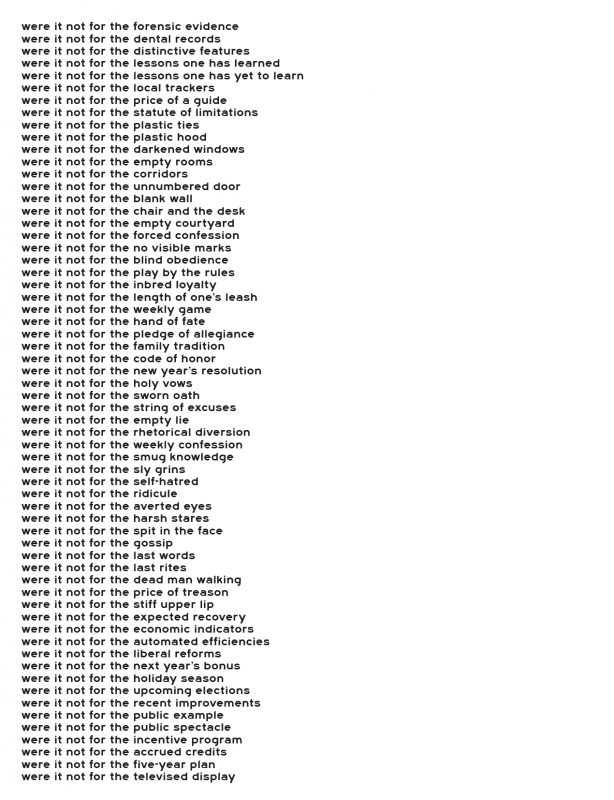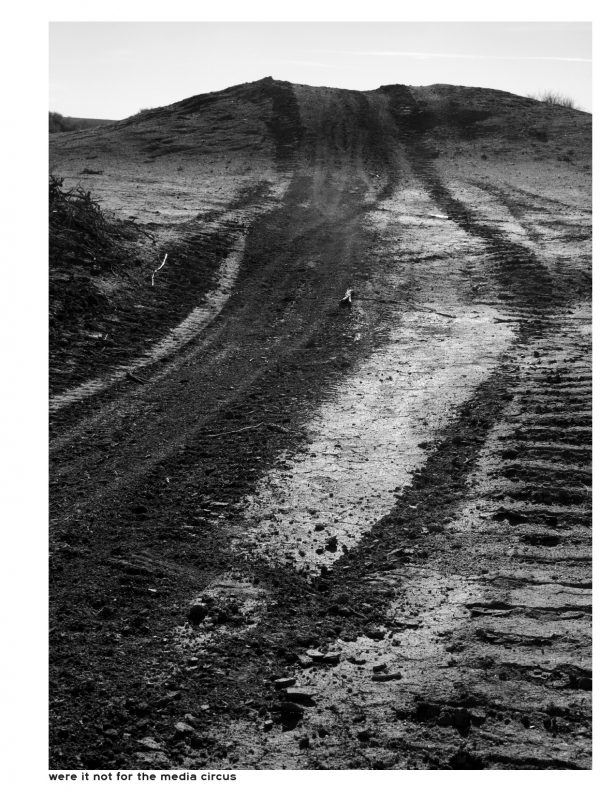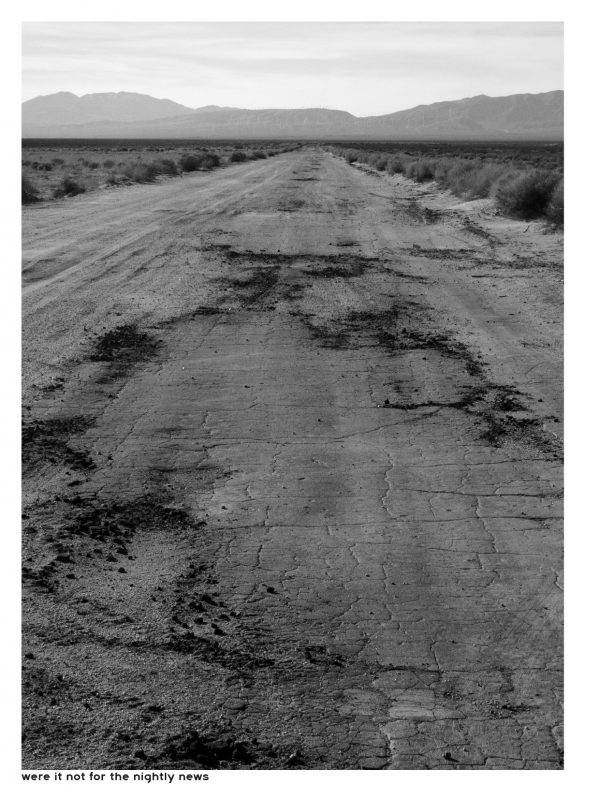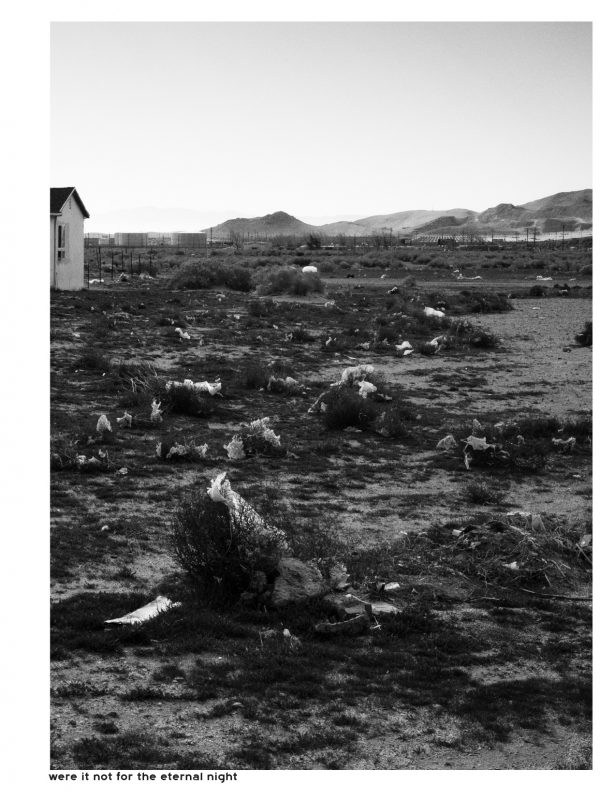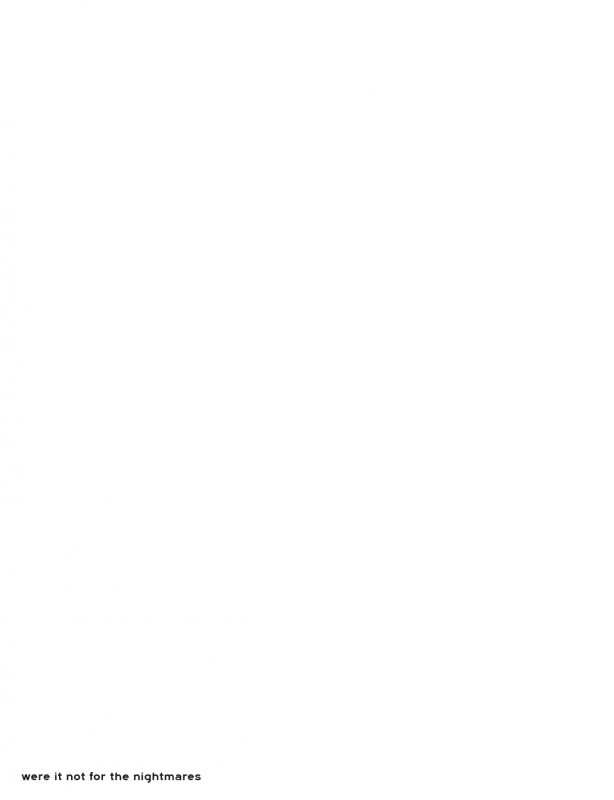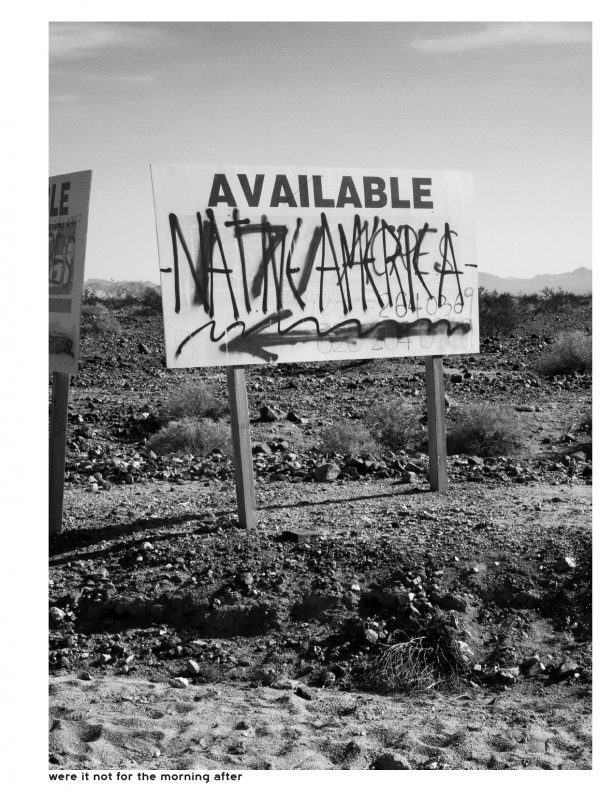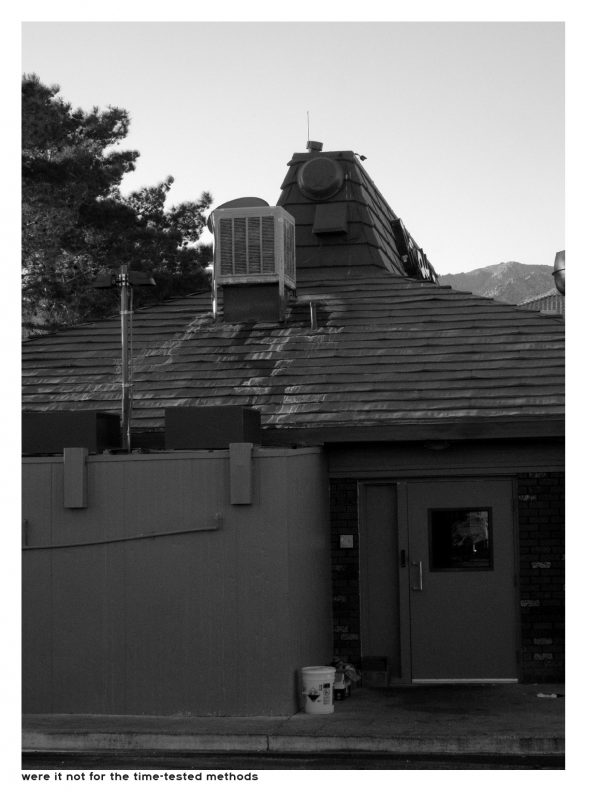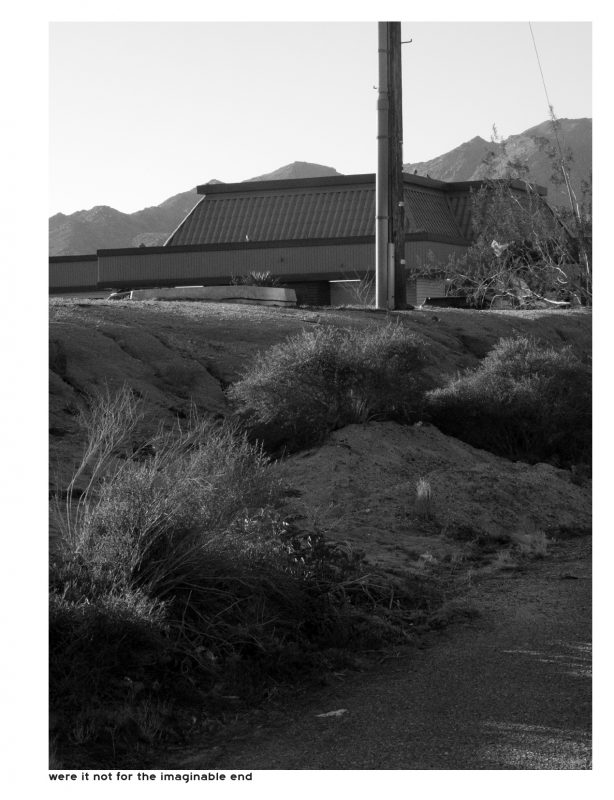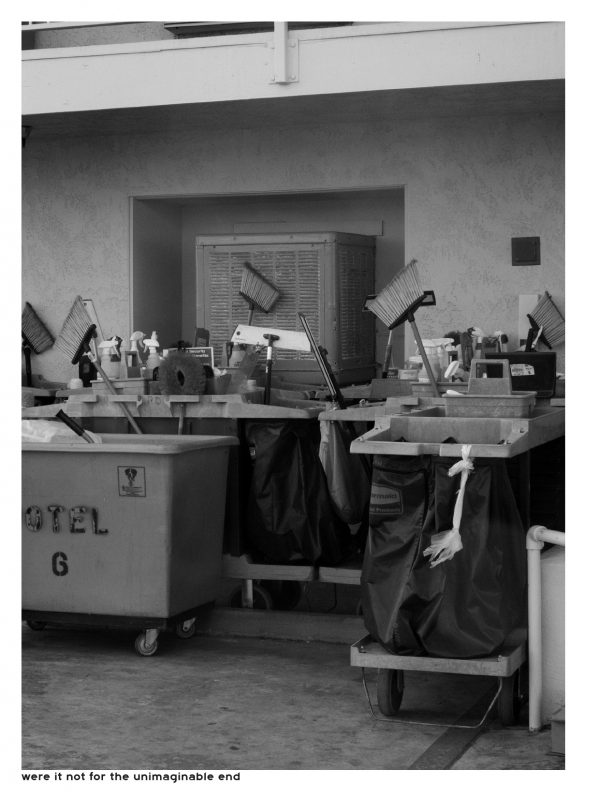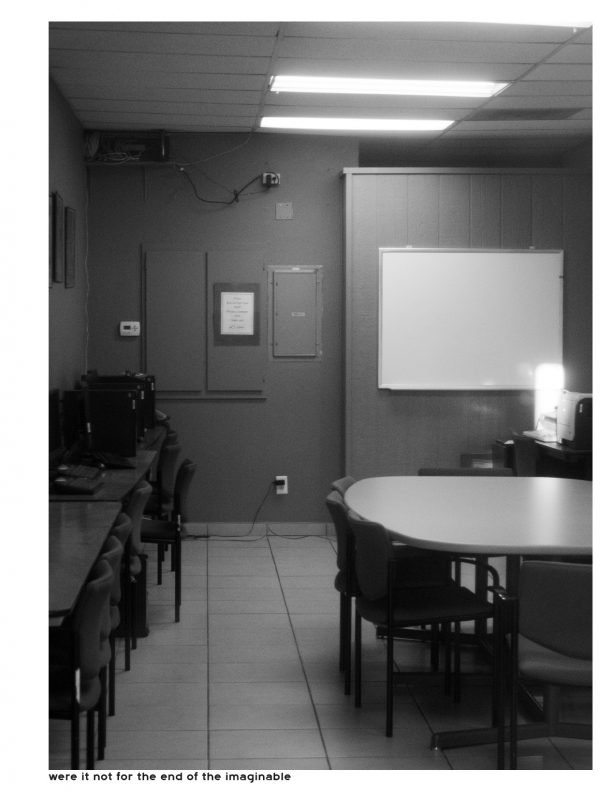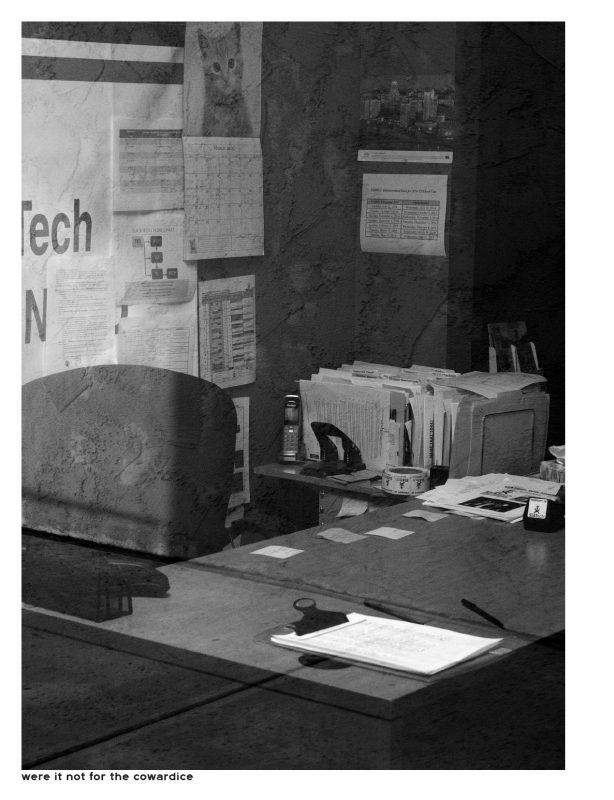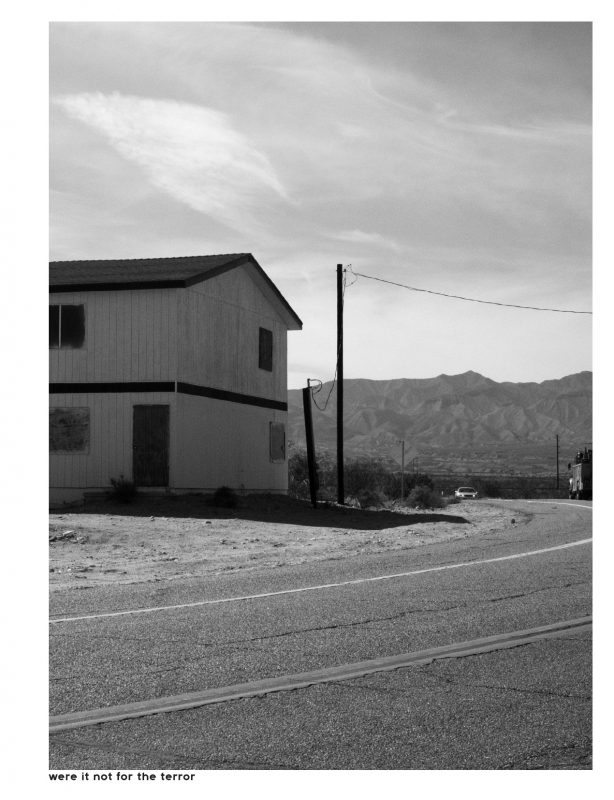Michael Ashkin
Were it not for
Book review by Eugénie Shinkle
In the desert, the traces of human presence are visible on the ground for a long time. Alongside the remains of earlier inhabitants are other, more recent legacies –– accidental landscapes of exhausted ground, tracked and paved over, sown with garbage, shattered and heaped up. Created by obscure acts of violence, places such as these seem to exist below the horizon of sense, their dialect both familiar and unreadable.
Between 2014 and 2017, Michael Ashkin made a series of visits to the American West, covering a vast circle with the Mojave Desert at its centre – Phoenix, Las Vegas, Lake Mead, Death Valley, the Imperial Valley, Lake Havasu, the Salton Sea, Palm Springs, Edwards Air Force Base, California City, the San Diego suburbs, and the US/Mexico border near Calexico. These are the scaled-up, hubristic landscapes of manifest destiny, built on the back of monumental successes and equally epic failures, potent embodiments of the sense of possibility that defines what it means to be American. But Ashkin saw these places differently, as anxious expressions of a society in which “violence is regularly enacted in the most mundane moments and places according to rules and intersections of forces that are not always apparent”.
Were it not for published by FW: Books is a dark book. It documents shallow histories, disposable geologies of plastic and cardboard and used-up commodities. It is an elegy for a landscape shaped by cumulative minor desecrations, inevitable outcomes of the violence that inheres in casual acts of consumption: “how we decide to use and value objects, how we exploit them, own, possess and dispense with them, how we tell their history, interact with them unthinkingly and often quite cheerfully, and how we ultimately describe them and think about them within the limits of our language.” For Ashkin, these anonymous spaces, and the debris that is spread over them, are the nuclei around which the existential dread of a nation is crystallised.
Ashkin’s photographs are neither easy nor beautiful. Displayed in a roughly chronological order, they consist mostly of exterior shots of unnamed places: vacant lots, empty ground, roadsides. Their form and subject matter are repetitive: rubbled foregrounds, fences and barriers, blank walls, dumped trash, blocked horizons, the characterless oblongs of low-rise architecture. Occasionally, we glimpse an empty office set behind dusty plate glass; they have the air of places where some kind of force is administered. Sometimes, between one frame and the next, the camera shifts slightly, moving in closer, revealing things that were obscured by other things, but providing no new information. The unease in Ashkin’s pictures has a blunt, simmering quality that courses slowly through the body like an infection.
It would be tempting to describe Ashkin’s photographs as landscapes if everything about them didn’t resist this definition. They are neither natural nor scenic; they contain neither a hint of promise nor a shred of redemption. What’s most remarkable about these images is their almost total vacuity: overfilled with visual information but somehow devoid of content. Ashkin shoots in landscape format but crops his images to portrait – itself a kind of violence, a repeated violation of the order of landscape and the perspectival logic of the photographic frame. Every picture is haunted by this missing information – ghosts of what the camera saw, the phantom limbs of rational space.
Running through the images are 680 lines of anaphoric verse. Some are stacked up in thick columns, others are randomly assigned as captions to individual images, a few sit alone on otherwise blank pages. Writing in the dark, during periods of insomnia, Ashkin composed the text in the lightless middle ground between wakefulness and sleep – a liminal space echoed in the text itself: “I imagined what could exist between the writing subject and what lay beyond the distant mountains.” Composed some years before the photographs were taken, the text has no direct relationship to them. Its logic is not that of the caption; instead, it follows the prosodic order of the incantation or psalm. It runs through the work like the drone of an invisible machine, measured and deeply evocative, a slow-flowing index of pasts and presents, events and states of being, familiar images and strange mutations. We like to imagine language as a scaffold for the image; a way of creating meaning when the photograph gives us none. But Ashkin’s words follow their own strange order: “In the end, the phrases amount to a list of how the status quo reinforces itself, how inertia is maintained.” Here, the repetitive sequence of the anaphora is the steady rhythm of nothing happening.
Were it not for takes as its subject the unfocused middle ground of history; places with no identifiable past or future and a drab, leaden present. Territories not unlike these were staked out in the 1970s by photographers like Lewis Baltz and Robert Adams, early on in a process of recognition that jolted the idea of landscape out of the orbit of human living and into the deep, cold-blooded space of capital. The topographies of waste in Ashkin’s photographs are the end game of this process. And if the places that Baltz and Adams photographed were understood as abstractions – space deployed as a commodity by the machinery of advanced capitalism – the places that Ashkin photographs are abstractions made real.
‘When we pay attention to the world, I believe we have to admit that it is a fearful place down to its smallest details,’ remarks Ashkin. Were it not for is a catalogue of such details – a procession of negations and refusals that mirrors the working of capital itself. There is a certain satisfaction in unlocking the conceptual schema of the work – understanding it not simply as a document of disorder but a disordered document with transgression built into it: a refusal of rational space, of narrative time, of customary perception. Others encounter the work differently. Ashkin showed the book to a class of medium-security prisoners at Cayuga Correctional Center in New York State: “They were very interested in its logic. One prisoner (about to be deported back to Honduras) had migrated across the desert border and he said the book described the world as he understood it.” There’s not much in the way of conventional aesthetic pleasure to be had from Were it not for. What it offers instead is a blunt enactment of capital’s own corrupt devices – for some, an intellectual privilege, for others, a lived reality. ♦
All images courtesy the artist and FW: Books. © Michael Ashkin
—
Eugénie Shinkle is a photographer, writer, and Reader in Photography at the University of Westminster. She writes for various publications such as Foam, Aperture, Fashion Theory, American Suburb X, and The Journal of Architecture. Recent work includes Fashion Photography: the Story in 180 Pictures (Aperture/Thames & Hudson 2017) and ‘Painting, Photography, Photographs: George Shaw’s Landscapes’, in George Shaw: A Corner of a Foreign Field (Yale University Press 2018).

